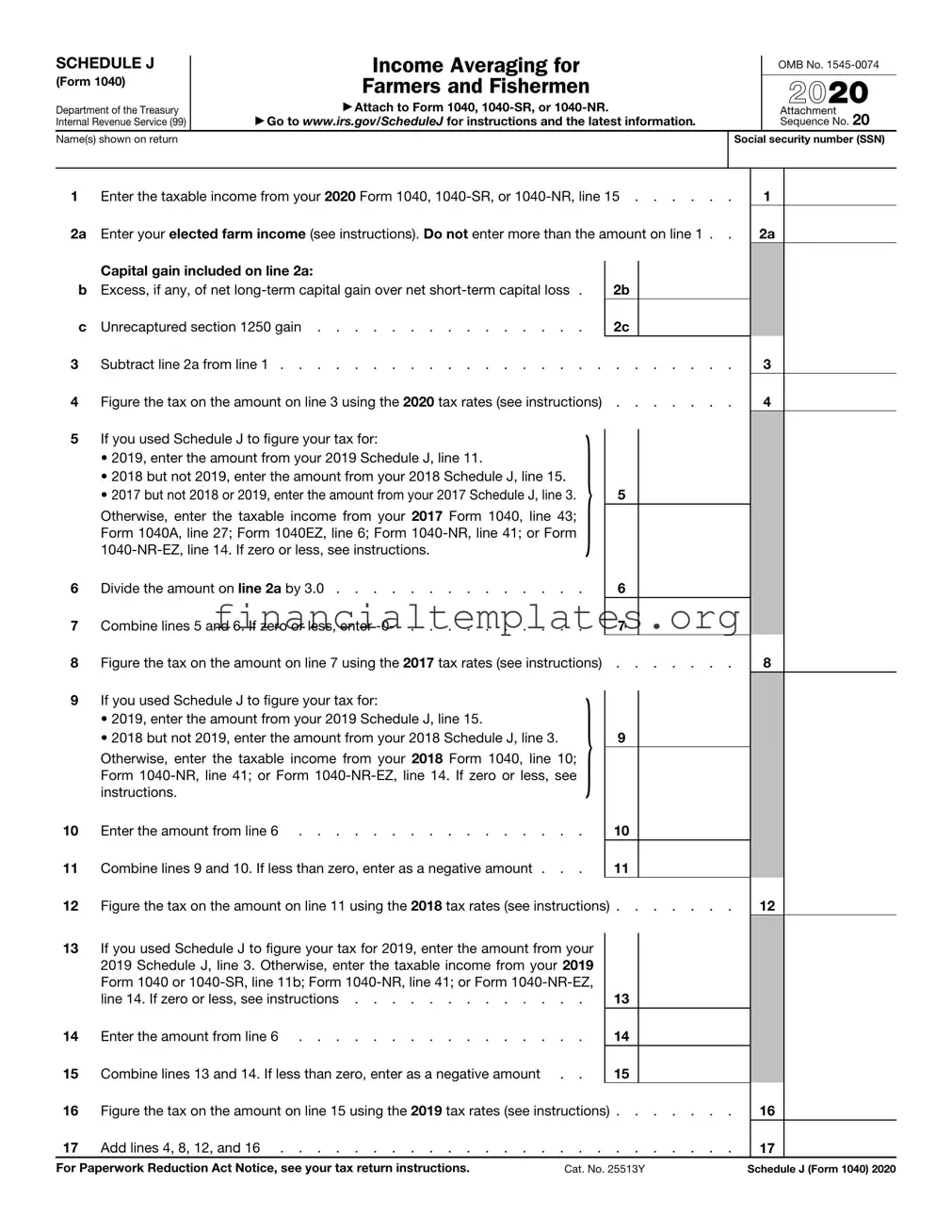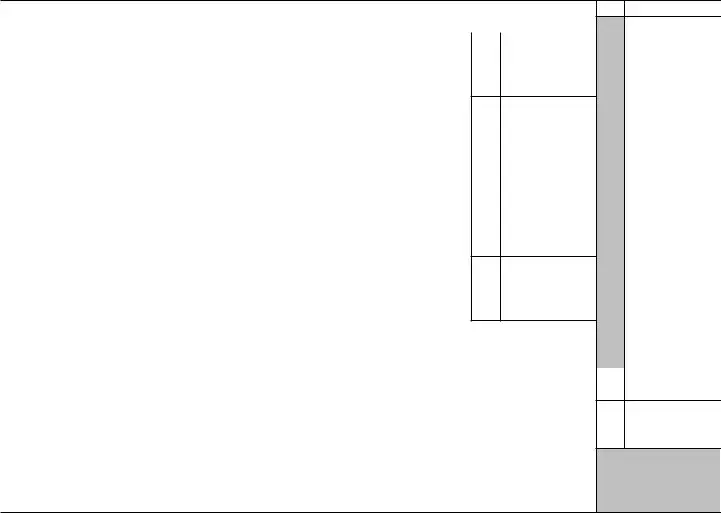The IRS Schedule J 1040 form is closely related to the Schedule A (Itemized Deductions) form. Both forms are attachments to the main Form 1040 used for individual tax returns. While Schedule J focuses on averaging farm income over a three-year period for farmers, Schedule A allows taxpayers to itemize deductions such as medical expenses, state taxes, and charitable contributions. Each serves to adjust gross income, albeit for different purposes and populations, making them critical tools for reducing taxable income through specific, eligible expenses or averaging methods.
Another document similar to the IRS Schedule J 1040 form is the Schedule C (Profit or Loss from Business). Schedule C is designed for sole proprietors to report income or loss from a business. Just like Schedule J provides a mechanism for farmers to calculate taxable income by averaging their earnings, Schedule C enables business owners to report their business's financial activity, detailing income, expenses, and the resulting profit or loss. This parallel lies in their objective to align taxable income with actual income fluctuations over time or within the fiscal year.
The Schedule D (Capital Gains and Losses) form also shares similarities with Schedule J. Both forms cater to specific subsets of taxpayers - Schedule D for individuals realizing gains or losses from the sale of assets, and Schedule J for farmers opting to average their income. Each form adjusts the taxpayer's income based on particular financial activities or strategies, influencing the overall tax calculation by considering either capital transaction outcomes or averaged farm income.
Similarly, the Schedule E (Supplemental Income and Loss) is akin to Schedule J in that it provides taxpayers with a method to report specific types of income. Schedule E is used for reporting income or loss from rental real estate, royalties, partnerships, S corporations, estates, trusts, and residual interests in REMICs. Like Schedule J, it's an adjunct form allowing for the detailed reporting of income that doesn't fit the standard wage or salary mold, thereby affecting tax liabilities by highlighting specialized income streams.
The Schedule F (Profit or Loss From Farming) form is particularly akin to Schedule J, as both directly serve farmers. Schedule F outlines the income and expenses related to farming, thereby calculating the profit or loss from farming activities. Its close relationship with Schedule J is found in its target demographic and its purpose to accurately reflect farm operations' financial realities in tax calculations. Together, they offer a comprehensive framework for farmers to report their income, with Schedule J providing an option to smooth out income variability.
The Schedule SE (Self-Employment Tax) form, while focusing on calculating the self-employment tax owed, shares an audience with Schedule J: individuals whose earnings primarily come from non-wage sources. Schedule SE is crucial for self-employed individuals, including farmers who may also file Schedule J, to report Social Security and Medicare taxes. Both forms facilitate accurate tax responsibility accounting for earnings that aren't subject to withholding by an employer, emphasizing the diverse income streams and tax scenarios self-employed individuals face.
The Form 4562 (Depreciation and Amortization) provides a mechanism for taxpayers to account for the depreciation and amortization of property, which is a concept somewhat parallel to the income averaging of Schedule J. Although serving different ends—Form 4562 deals with expensing asset depreciation over time, and Schedule J averages income—both allow taxpayers to spread the financial impact of significant business-related factors over multiple years, offering a more accurate picture of annual financial health.
The Schedule K-1 (Partner's Share of Income, Deductions, Credits, etc.) resembles Schedule J in that it is used by partners and S corporation shareholders to report their share of the business's income, deductions, credits, etc. Just like Schedule J allows individual farmers to smooth out their income reporting, Schedule K-1 ensures that individual business owners can account for their personal share of a business entity's financial activity, impacting their personal tax obligations with precision.
Lastly, Form 2210 (Underpayment of Estimated Tax by Individuals, Estates, and Trusts) shares a connection with Schedule J by addressing taxpayers' management of their tax payments throughout the year. While Form 2210 is used when taxpayers haven't paid enough taxes through withholding or estimated tax payments, it intersects with Schedule J’s purpose by potentially affecting how much tax is due each quarter when a farmer chooses to average their income. In essence, both documents are critical in planning and reconciling tax responsibilities to avoid underpayment penalties.
The Form 8824 (Like-Kind Exchanges) provides a way for taxpayers to defer recognizing a gain or loss on the exchange of certain types of property, which aligns with the purpose of Schedule J in terms of offering taxpayers a more favorable approach to reporting financial movement. Though Form 8824 deals with the specifics of property exchange and Schedule J with income averaging, both forms aim at reducing immediate tax burden by recognizing the continuity and long-term strategy in financial and operational decisions.


